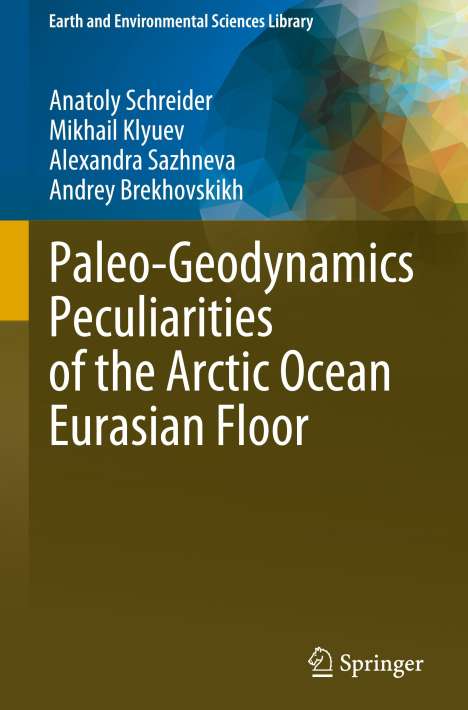Anatoly Schreider: Paleo-Geodynamics Peculiarities of the Arctic Ocean Eurasian Floor
Paleo-Geodynamics Peculiarities of the Arctic Ocean Eurasian Floor
Buch
- Springer Nature Switzerland, 03/2024
- Einband: Gebunden, HC runder Rücken kaschiert
- Sprache: Englisch
- ISBN-13: 9783031547973
- Artikelnummer: 11803449
- Umfang: 132 Seiten
- Nummer der Auflage: 2024
- Auflage: 2024
- Gewicht: 371 g
- Maße: 241 x 160 mm
- Stärke: 13 mm
- Erscheinungstermin: 20.3.2024
Achtung: Artikel ist nicht in deutscher Sprache!
Klappentext
The book deals with some issues of paleo-geodynamics of the Eurasian floor of the Arctic Ocean.A comprehensive geological and geophysical analysis of information on the anomalous magnetic field in the Eurasian Basin was carried out using modeling of the inversion magnetically active layer of the oceanic crust. As a result of this analysis, the identification and spatial position of linear paleo-magnetic anomalies were refined, which made it possible to significantly update the geochronology of the bottom of the Eurasian Basin and identify a number of stages in its evolution.
On this basis, the features and stages of the kinematics of the development of the bottom of the Eurasian Basin in the past were revealed.
At the first Cretaceous Paleogene stage, prior to the formation of the A26 paleo-anomaly on the Eurasian margin, extension processes developed significantly and turned into rifting. In the process of rifting, weakened zones and related fractures were formed, along which the Siberian continental margin began to be torn off about 60 Ma ago with the formation of the Lomonosov Ridge.
At the second stage of evolution, rifting turned into spreading, and the growth rate of the new oceanic crust in the A26 A24 paleo-anomaly interval (59 53 Ma ago) was more than 2.5 cm / yr. At the same time, the northern flank of the Mid-Arctic Ridge grew more intensively than the southern one.
The third stage was characterized by a further progressive slowdown in the process of bottom spreading, the minimum of which, with spreading rates of about 1 cm / year, fell on the formation of paleo-anomalies A13-A6 (30-20 million years ago).
The fourth stage of growth of the new oceanic crust began later than the time of the A6 paleo-anomaly and is characterized by some intensification of growth at rates up to 1.2 cm / yr. The average rate of bottom growth over an interval of almost 60 Ma turned out to be close to 1.3 cm / yr, which makes it possible to classify the Mid-Arctic Ridge as a slow-growing one.
On this basis, kinematic models of the development of bottom configurations were developed with the determination of the Euler poles, rotation angles, asymmetries, axes of spallation and paleo-bathymetry for the Eurasian Basin, the Polar part of the Lomonosov Ridge, the splitting of the Arlis Spura from the Lomonosov Ridge, the development of the Gakkel Ridge and the development of the Greenland region of the bottom.


